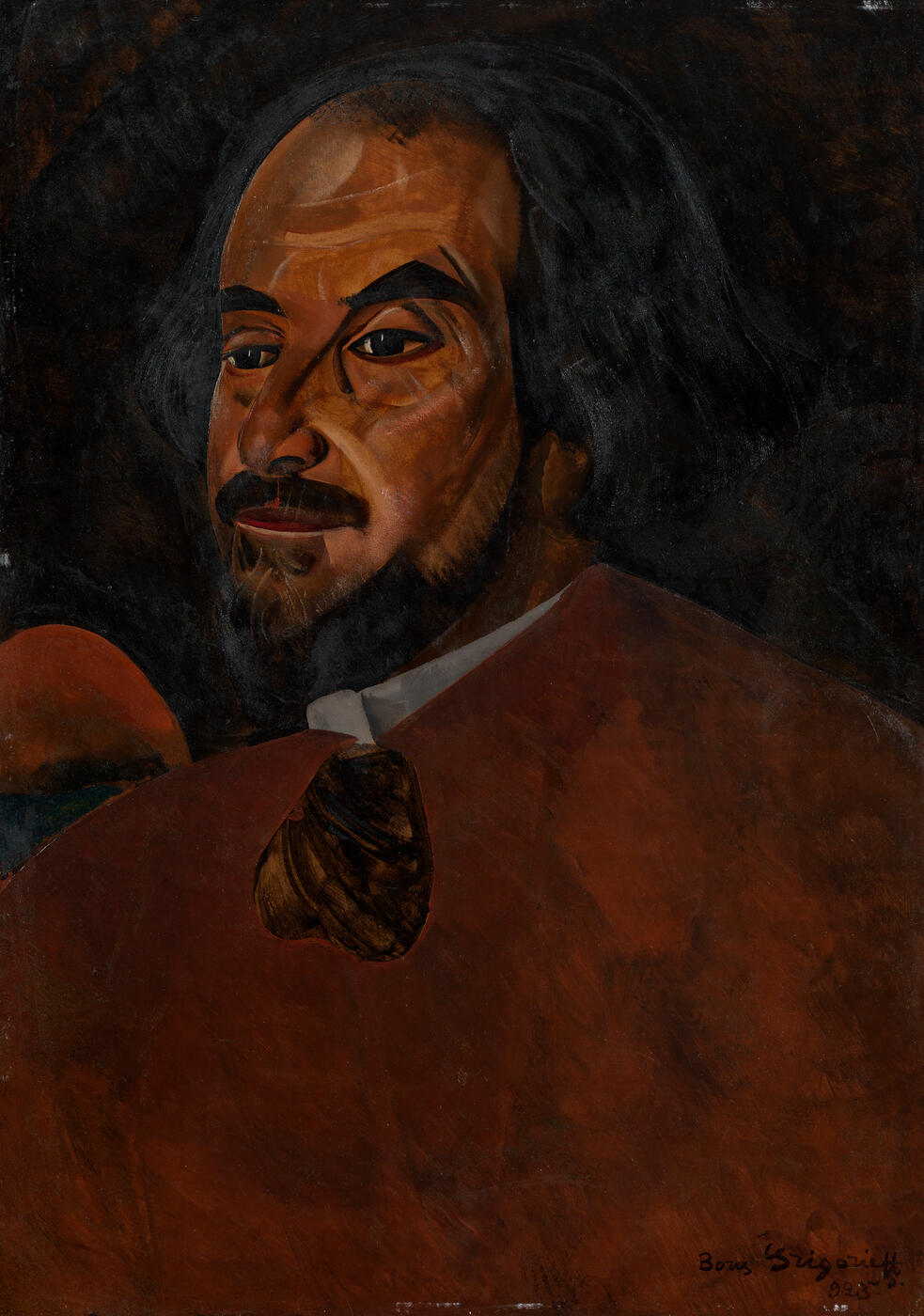4 June 2014 Russian Art Auctions
4 June 2014

* 10. GRIGORIEV, BORIS (1886-1939)
Portrait of a Man, Said to be the Actor Nikolai Aleksandrov, signed and dated twice "923/23".
Oil on cardboard, 70.5 by 50 cm.
350,000-500,000 GBP
Provenance: Russian Art, Sotheby’s London, 5 November 2000, lot 78.
Acquired at the above sale by the present owner.
Private collection, Europe.
Authenticity of the work has been confirmed by the experts A. Nizamutdinova, T. Chudinovskaya and O. Golubeva.
Portrait of a Man, Said to be the Actor Nikolai Alexandrov by Boris Grigoriev belongs to the famous cycle Visages de Russie, dedicated to the Moscow Arts Theatre (MKhAT).
Nikolai Alexandrov (1870–1930), dubbed by his colleagues “the valiant defender of the ethics and traditions of the Arts Theatre”, joined MKhAT when it was founded and devoted the rest of his creative life to it. Konstantin Stanislavsky valued him as one of the most important members of the Theatre. Alexandrov acted, helped Stanislavsky with artistic direction, served on the Theatre’s management board, and led the design and costume department.
Alexandrov performed in several of the productions shown by MKhAT on its tour to Paris and the USA in 1923. He acted in Alexei Tolstoy’s Tsar Fyodor Ioannovich, took several roles in Gorky’s Lower Depths, played Yasha in The Cherry Orchard and Artemyev in Turgenev’s Living Corpse.
As a highly-skilled character actor, Alexandrov could fashion a tour de force from the most minor part. Boris Grigoriev captured this ability in his pictures of Alexandrov: a small drawing, published in the first edition of Visages de Russie in 1923 shows Alexandrov in the role of the Actor from The Lower Depths, and the large portrait, offered here for auction, shows Alexandrov as the merchant Krasilnikov in Tsar Fyodor Ioannovich.
The portrait of Alexandrov, like all the portraits of MKhAT artists in 1923, is not a staged composition, but an impressionistic work of art. Only a few of these works – painted for the most part backstage after performances – are against backgrounds that resemble stage scenery. In most of the pictures Grigoriev creates an expressive image with nothing but the enlarged face of the actor in the role. Grigoriev remains true to the theme of the artist and artistry, which he had already marked out in his portraits of Meyerhold and Chaliapin from the 1910s, but here the theme is developed not through the outer trappings, but by capturing how the actor’s personality manifests a “face of Russia”. What interests Grigoriev is not any expressive mise-en-scène, but the psychological portrayal of character, captured at a particular moment of the theatrical play.
The start of the MKhAT tour in New York (spring 1923) coincided with a large exhibition of Russian emigre artists at the Brooklyn Museum, including Grigoriev’s Raseya, which brought the artist international fame. He was acclaimed “the great Grigoriev”, his peasant faces were considered to be an outstanding representation of Russian village life and his portraits of MKhAT actors were acclaimed as the finest representation of the Russian intelligentsia. The popularity of Moskvin, Stanislavsky, Kachalov, Knipper and other famous exponents of Russian “psychological” theatre rubbed off onto their “iconography”, securing international fame for Grigoriev’s portraits. The painter seized the opportunity and sold several of the works in America, whose whereabouts is still unknown. The portrait of Nikolai Alexandrov has only recently surfaced to resume its place in the heritage of Russian art and theatre.
Notes on symbols:
* Indicates 5% Import Duty Charge applies.
Ω Indicates 20% Import Duty Charge applies.
§ Indicates Artist's Resale Right applies.
† Indicates Standard VAT scheme applies, and the rate of 20% VAT will be charged on both hammer price and premium.